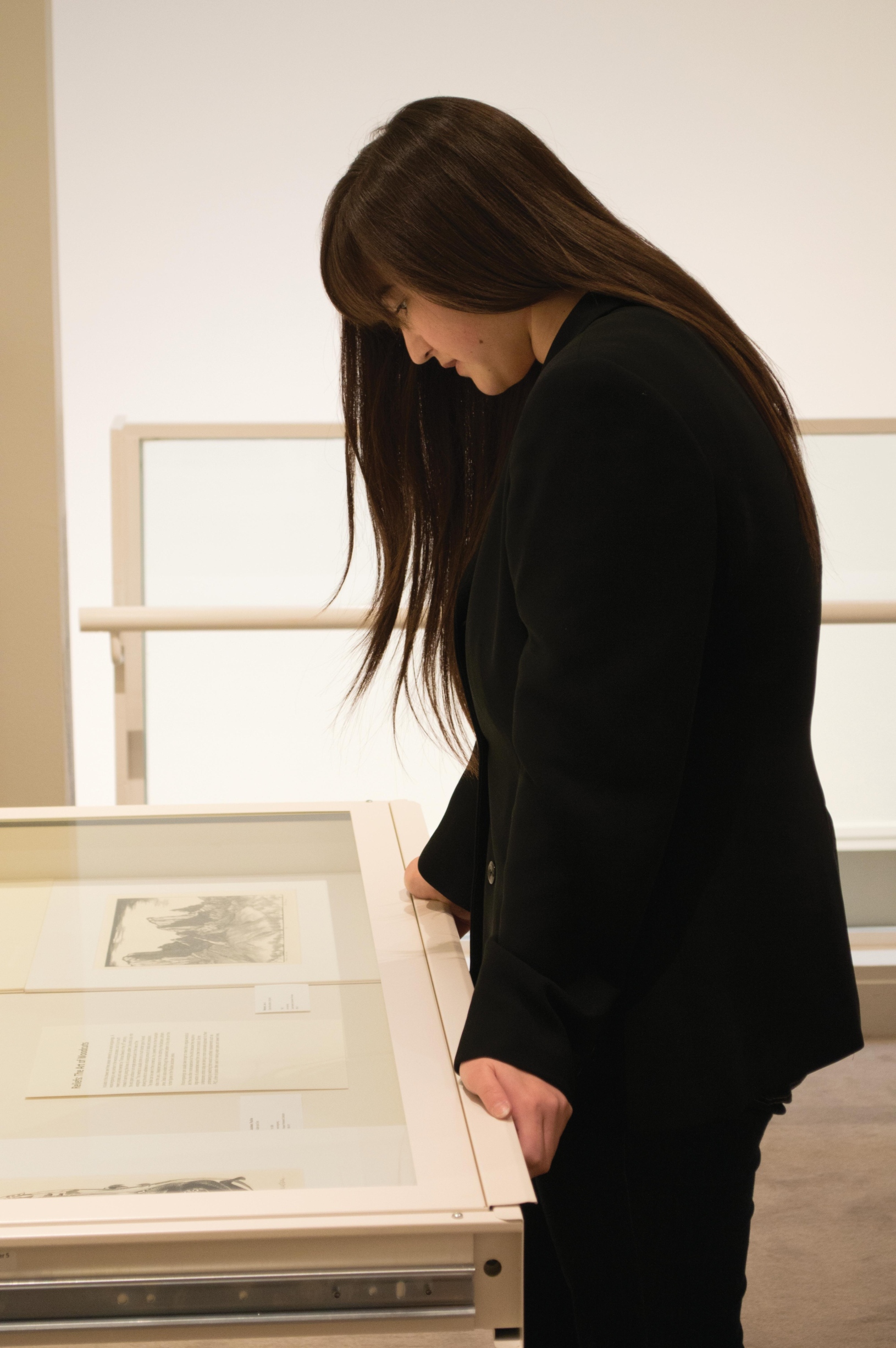‘Reliefs: The Art of Woodprints’ exhibit now open at the Nora Eccles Harrison Museum
The Nora Eccles Harrison Museum of Art at USU is home to a variety of artistic media. A selection of woodcut prints, many of which have never been on display in the museum before, are currently the focus of more attention than usual.
In “Reliefs: The Art of Woodprints,” a selection of 22 woodcut prints, which demonstrate the use of various tools and techniques, are on display on the museum’s upper floor. The pieces serve to provide an educational introduction to the artistic process of woodcut printing – or wood block printing – to students.
The intricate prints are created by carving a design into a block or sheet of wood, to which ink is applied and pressed to a piece of paper on a press, said Casey Allen, the museum registrar. In order to properly place ink to create an image, the wooden carvings must represent a mirror image of the design to be copied.
“Woodcut is almost like creating a reverse of an image and then creating it on paper,” Allen said.
A unique characteristic, which other printmaking processes lack, is the presence of the fine-grain detail created by the natural grain of the wood.
According to Allen, most artists work along this grain, creating a finished work that flows with the natural form of the wood.
“It allows the artist to use the material they are working with in a very intimate way,” Allen said. “Part of the design is getting it to work along with the design of the grain already in the wood.”
The selection of pieces on display in the museum, which were chosen from the museum’s collection by Allen and printmaking professor Kathy Puzey, are divided between the wide, shallow drawers of an industrial sized metal cabinet, said Andrea DeHann, a staff assistant at the museum.
The drawers, which are each topped with clear glass, contain works showing various artistic forms and techniques of woodcut printing by artists including Karen Kunc, Marion Hyde and Werner Drewes.
Informational text has also been placed inside each of the drawers, providing historical and artistic insight to the medium of woodcuts along with explanations on each artist’s rendition of the process, according to Allen.
“It really gives a whole new look to what art can be,” Allen said. “It shows us you can make art without paint and a paintbrush. You can make art in a different way.”
The museum’s display, which was created to serve as a reference material for Puzey’s printmaking classes, is an opportunity for all students to broaden their artistic understanding, Allen said.
“For the non-art person, it is an educational introduction to an artistic process,” Allen said. “One of our main goals when we have exhibits like this is to expose and educate students to an artistic process.”
“Reliefs: The Art of Printmaking” became available for viewing Monday and will remain on display until March 7. Admission to the museum is free, but a donation of $3 is suggested. The display is located in the museum’s Study Center Gallery.

